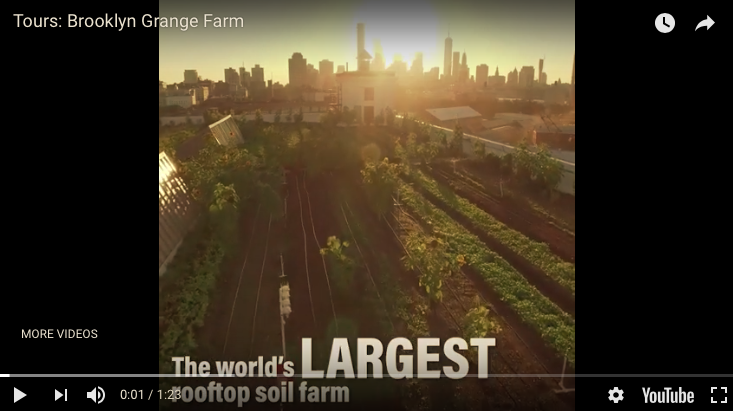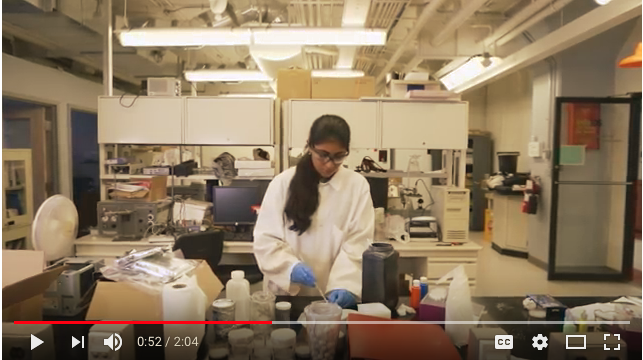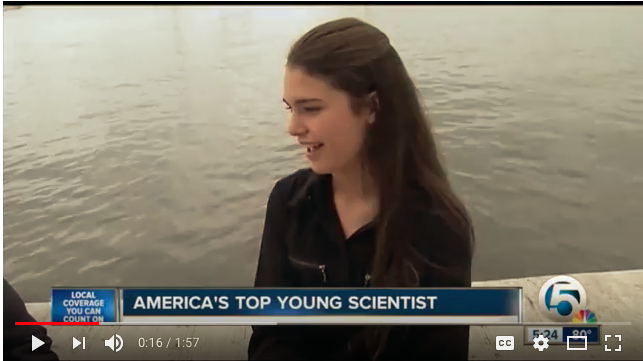(English) Innovative ways youth are saving the planet
- August 31, 2018
Désolé, cet article est seulement disponible en English. For the sake of viewer convenience, the content is shown below in the alternative language. You may click the link to switch the active language.
This year, August 1st marked ‘Earth Overshoot Day’, the day that everyone on earth collectively used up more from nature than our planet can renew in an entire year. In simpler terms, in just seven months, we consumed a year’s worth of Earth’s natural resources! According to the Global Footprint Network, “We are currently using more ecological resources and services than nature can regenerate through overfishing, overharvesting forests, and emitting more carbon dioxide into the atmosphere than ecosystems can absorb.”
What can we do to help reduce our carbon footprint? From urban rooftop farming, solar powered water purifiers to building sustainable power sources – we take a look at how some youth are taking matters into their own hands with some creative and innovative ways to tackle the issue.
Innovative ways youth are tackling environmental issues
Across the world, the younger generation are more aware of the importance of protecting the environment more than any other generation. They have been brought up in an era of environmental awareness, a world where environmental education is ingrained in school teachings. It is no wonder youth today are more proactive towards initiating awareness events, sharing ideas with their community to advocate and lobby towards adopting environmentally friendly practices. Using the power of the Internet and technology, social media and their collective voice many are using this opportunity to create innovative, sustainable environmental solutions.
Some of such innovative youths are:
Michelle Cashen, 25
Click here to watch the video on The world’s largest rooftop farm
Learning about the importance of a sustainable food system in college prompted Michelle Cashen, 25, to get a job as farm manager at the New York rooftop-farming company Brooklyn Grange, where she oversees production of everything from kale to less-common ground cherries. “The benefits of urban agriculture go beyond fresh and tasty vegetables,” she advises. “It provides precious green space, increases wildlife habitats, reduces the urban-heat-island effect, and helps combat combined sewer overflow caused by snowmelt or snow-water runoff.”
Deepika Kurup, 17
Click here to watch Deepika Kurup’s interview
“Seeing children drinking dirty water during summer trips to India inspired Deepika Kurup, 17, to take on the worldwide water crises in the eighth grade. “I developed an award- winning solar-powered method to remove bacteria and other contaminants from water,” reveals the current Harvard student. “I recently co-founded Aquidas, which is a non-profit aimed at deploying the technology I have developed to use in everyday settings.”
Hannah Herbst, 16
Click here to watch Hannah Herbst interview
Using science, Hannah Herbst created ‘an ocean energy probe prototype that seeks to offer stable power source to developing countries by using untapped energy from ocean currents.’ Hannah was inspired to do this by her nine-year-old pen pal living in Sub-Saharan Africa, where many people live in energy poverty with limited or no access to electricity. “I knew that I wanted to do something to help, so I created an ocean energy probe I call BEACON, or Bringing Electricity Access to Countries through Ocean Energy,” she tells Teen Vogue.
Hannah has also explored early identification methods for hazardous airborne chemicals, using any moving body of water into a source of useable electricity. “It’s made from 90% recycled materials easily found throughout the world, including 2-liter bottles and recycled spoons. The device costs $12 to make and can produce enough electricity to power an LED light bulb.” Hannah envisions BEACON being used in developing countries to power desalination pumps for fresh water, run centrifuges to test blood with, and power electric buoys for maritime navigation.



